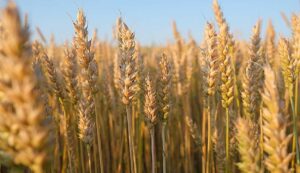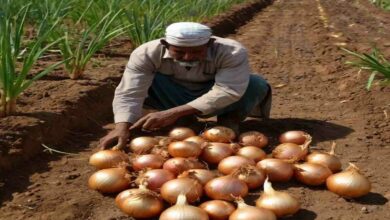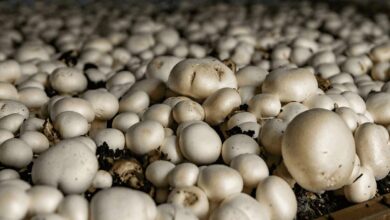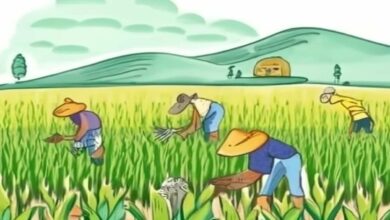Take care of the wheat crop in this way in rising temperatures, it will never cause damage
Wheat Crop: Wheat is a prominent Rabi crop in the agricultural state of Bihar. Temperature variations have been seen this year and in previous years due to climate change and weather uncertainty, which is having a negative impact on wheat production. By using climate-friendly farming methods, choosing contemporary species, managing nutrition in a balanced way, and implementing appropriate irrigation practices, these consequences may be significantly lessened. The impact of temperature changes on wheat growing in Bihar has been thoroughly examined.

Bihar’s Climate and Wheat Production
Bihar has a subtropical climate, making the Rabi season (November to April) ideal for growing wheat. Most often, wheat is planted in November or December and harvested in March or April. The development and output of wheat are significantly impacted by temperature variations during this time, particularly abrupt increases or decreases in the maximum and lowest temperatures.
Reasons for Temperature Variations
The following are the primary causes of abnormal temperature swings…
Climate change: Unusual temperature increases throughout the Rabi season are being caused by changes in the meteorological cycle and an increase in global temperatures.
La Niña and El Niño effect: Bihar’s climate is impacted by changes in the Pacific Ocean’s sea temperature, which may cause it to sometimes go colder or occasionally warm up more than usual.
Local weather events: Temperature variations are also caused by cyclones, western disturbances, and erratic rainfall.
Temperature variations’ effects on wheat crops
(i) During the November–December planting season
Germination may be hampered by a lack of moisture in the soil if the temperature is above average. This year, fewer wheat tillers were developed because of the higher-than-normal December temperatures.
(ii) The January–February growth and tillering phase
The crop’s growth rate slows down at this point if the lowest temperature drops too much, to 5 degrees Celsius. The crop’s ability to grow in balance may be impacted if the daytime temperature is low and the nighttime temperature is high. The process of growth and tillering has been severely impacted this year because of the few days when the temperature was below 5 degrees Celsius. Rapid temperature changes caused wheat to produce fewer tillers and had an impact on growth and development. Due to increased fog and dew, wheat grows and develops well in the winter. This is mostly because crops thrive when atmospheric nitrogen combines with dew and falls on the leaves.
(iii) The February–March period of flowering and grain production
Wheat grows swiftly during this period if there is a sudden spike in temperature (heat wave), which causes the grains to become light and shriveled and lowers yield. Wheat experiences heat shock at high temperatures, which degrades the grain’s protein and starch content. Pollination is hampered by below-normal temperatures, which lowers output.
(iv) Harvesting and ripening season (March–April)
Premature grain filling, which lowers the grain’s weight, happens if the temperature rises more than usual in March or April. Extreme heat causes wheat’s moisture to evaporate fast, lowering production and quality. The crop may collapse and its quality may decline as a result of severe storms and premature rainfall.
Potential fixes and management techniques
To lessen the detrimental effects of temperature variations, the following actions might be taken…
(i) Choosing climate-tolerant cultivars
Grow early-maturing, temperature-tolerant cultivars (e.g., HD-2967, DBW-187, HD-3086). choosing cultivars that can withstand heat and drought.
(ii) Modified sowing period
Early planting (November 10–25) might lessen the effects of temperature changes. Appropriate cultivars like HD-2932 and DBW-90 should be used for late sowing.
(iii) Controlling moisture and irrigation
During the key growth period, proper irrigation should be carried out.
(iv) Management of fertilizer
To improve crop tolerance, use fertilizers that are balanced in terms of nitrogen and potassium. Make use of humic acids and biofertilizers.
(v) Pest and disease management
Protective fungicides should be sprayed since rising temperatures may exacerbate blight. Aphid and termite infestations are exacerbated by rising temperatures and humidity, and they should be managed organically.





